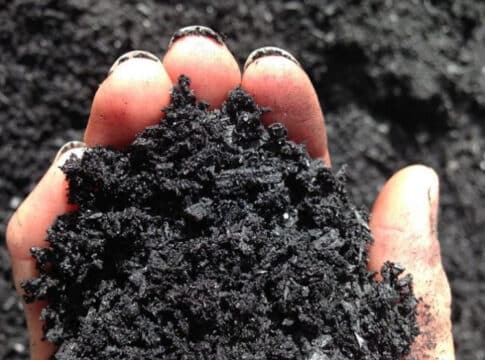Verra To Release Methodology For Biochar Carbon Credit Projects
Verra, the biggest carbon registry, is set to release a new methodology for biochar projects, quantifying their climate benefits and creating nature-based carbon removal credits.
Biochar is a solid material that has high levels of carbon. It’s made from feedstock biomass that offers compelling climate benefits.
Biochar is commonly used in agricultural applications as it can improve soil nutrients to increase crop yield. In general, biochar applications can increase soil CO2 emissions.
But biochar can also boost soil carbon sequestration and reduce GHG emissions.
As per IPCC 6th Assessment Report, soil carbon management in agriculture like biochar projects can reduce about 1.8 to 4.1 gigaton/year of CO2.
Verra’s New Biochar Methodology
Verra helps scale up climate action outcomes by driving large-scale investment in projects that reduce emissions.
It plans to release its biochar GHG accounting methodology in July. It will help biochar project developers in generating carbon credits to attract investments.
The international registry started devising the framework in 2020. The certifier noted that “biochar can contribute significantly to climate change mitigation when deployed at a massive global scale.”
Biochar is a stable source of carbon because microbes find it very tough to break down. When incorporated into soils, it is 10x to 100x more stable than the feedstock from which it’s made of.
That means the carbon contained in biochar is not likely to degrade to CO2 to the same extent as other organic materials.
In fact, biochar incorporated into soils can store carbon for decades to millennia.
In particular, a study estimates that biochar can sequester as much as 2 GtCO2 per year by 2050 at a cost of $30–$120 per ton of CO2.
Biochar also offers agricultural benefits such as increased aeration and water holding capacity.
Yet, there hasn’t been enough market incentive to scale its application to the levels that can help tackle climate change.
Accordion to Liz Guinessey, a manager at Verra:
“Generally, the process of going through and producing biochar doesn’t really provide enough incentive… However, the carbon sequestration potential certainly does incentivize that.”
Biochar and Carbon Credits
Carbon credits produced by biochar projects are part of the nature-based removal category. They specifically fall under hybrid carbon removal projects.
Last March, Nasdaq launched 3 carbon removal price indexes, which are based on Puro.earth Carbon Removal Certificates (CORCs).
One of them is the CORCCHAR – or the CORC Biochar Price Index for biochar. CORC refers to the tradable digital asset representing a ton of carbon removed from the air.
Biochar carbon credits are typically priced in the range of $3 to $20+ per MtCO2e. But some biochar projects have sold credits for $110/tCO2e.
Biochar credits are also one of the components of Platts Nature-Based Removal price assessments along with other nature-based projects. These include reforestation, afforestation, and mangrove projects.
Verra’s biochar methodology provides a framework for quantifying emission reductions and removals from:
Improved waste handling practices that result in the production of biochar from feedstock biomass;
The use of biochar in soils; and
Certain non-soil material applications such as cement or asphalt.
The framework comes after a consensus that surrounds biochar and its ability to sequester carbon for a very long period of time. And Verra was prompted into developing it after getting persistent requests from potential biochar project developers.
The approval process for publishing the biochar methodology is rigorous. It involves multiple stages with participation from various groups.
When released, it will enable both soil and non-soil biochar projects to make nature-based carbon credits.
It will also allow for a diverse range of biomass products as sources of feedstock. That’s as long as biochar projects can verify that the biomass would otherwise be wasted.
Verra’s biochar methodology and its accounting framework will reveal carbon impacts up and down the biochar value chain. That’s from feedstock sourcing to the final biochar application stage.
Other monitoring mechanisms will also be in place to protect against risks of carbon sequestration reversal.
As per Verra:
“We do expect to have a pretty robust pipeline of projects as soon as the methodology is approved.”
The biochar methodology was put together by Verra with Forliance, South Pole, and Biochar Works.
The post Verra To Release Methodology For Biochar Carbon Credit Projects appeared first on Carbon Credits.



